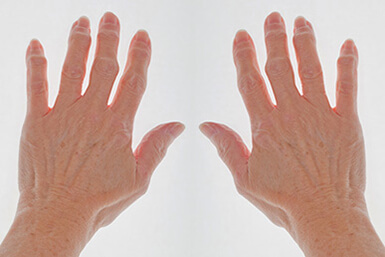Physical Address
304 North Cardinal St.
Dorchester Center, MA 02124
Physical Address
304 North Cardinal St.
Dorchester Center, MA 02124

Contents
Psoriatic arthritis is a complex condition that affects individuals differently, with symptoms ranging from joint pain and swelling to skin and nail changes. Understanding the five types of psoriatic arthritis can help in proper diagnosis and treatment planning.
Asymmetric oligoarthritis is characterized by joint symptoms in fewer than five small or large joints, affecting only one side of the body. This type accounts for about 35% of psoriatic arthritis cases and can lead to pain, redness, and stiffness in joints like the knees, hands, or feet.
Individuals with asymmetric oligoarthritis may experience symptoms such as red, scaly skin patches, morning stiffness, and limited joint flexibility. It is essential to differentiate this type from other forms of arthritis to provide appropriate treatment.
Symmetric polyarthritis affects five or more joints on both sides of the body, mirroring symptoms in corresponding joints like elbows, knees, or hands. This type is the most common form of psoriatic arthritis, occurring in approximately half of all cases.
Similar to rheumatoid arthritis, symmetric polyarthritis can cause swelling in fingers or toes, leading to a “sausage-like” appearance. Symptoms include morning stiffness, skin rashes, and joint pain, necessitating early intervention to prevent joint damage.
Distal arthritis primarily targets the end joints of fingers and toes, resulting in pain, swelling, and nail changes. Less common than other types, distal arthritis may present with symptoms like nail pitting, discoloration, or separation from the nail bed.
Individuals with distal arthritis may mistake the condition for osteoarthritis due to its location and nail involvement. Proper diagnosis and management are crucial to address joint stiffness, discomfort, and cosmetic nail issues.
Arthritis mutilans is a severe and rare form of psoriatic arthritis that can lead to joint deformity and destruction, particularly in the hands, wrists, and feet. Less than 5% of individuals with psoriatic arthritis develop this aggressive type.
Characterized by bone loss, joint fusion, and telescoping fingers, arthritis mutilans causes significant pain, immobility, and functional impairment. Early detection and advanced treatment options are essential to prevent irreversible joint damage and disability.
Spondyloarthritis encompasses psoriatic arthritis cases with spinal involvement, leading to pain, stiffness, and inflammation in the spine and sacroiliac joints. This type can also affect other joints in the body, causing additional symptoms like shoulder weakness or leg discomfort.
Individuals with spondyloarthritis may experience challenges in movement, posture, and daily activities due to spine-related issues. Timely diagnosis and multidisciplinary care are crucial to managing symptoms and preserving spinal function.
While the traditional classification of psoriatic arthritis into distinct types provides valuable insights, modern rheumatologists focus more on the diverse manifestations or domains of the disease. Understanding the various domains of psoriatic arthritis can guide personalized treatment approaches and holistic patient care.
Psoriatic arthritis domains encompass different aspects of the condition that individuals may experience, including peripheral arthritis, axial disease, enthesitis, dactylitis, skin psoriasis, and nail lesions. Each domain contributes to the overall disease burden and treatment considerations.
By recognizing and addressing specific domains, healthcare providers can tailor treatment plans to target individual symptoms and prevent disease progression. Collaborative management involving rheumatologists, dermatologists, and other specialists is essential for comprehensive care and improved outcomes in psoriatic arthritis.
Ultimately, a nuanced understanding of the types and domains of psoriatic arthritis enables healthcare professionals to deliver personalized, effective, and patient-centered care to individuals living with this chronic inflammatory condition.